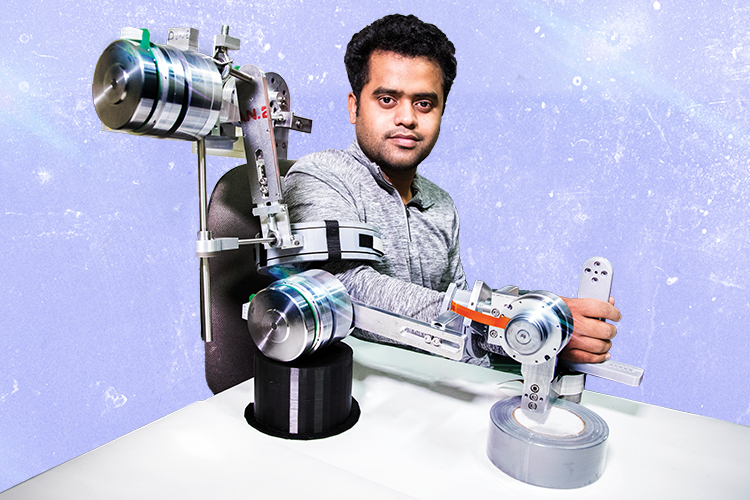Dr. Habib Rahman and his team of Ph.D. students have been working on an autonomous exoskeleton robotic arm that allows the elderly, stroke victims, and those with traumatic injuries to do physical therapy without the physical therapist.
The device works by strapping a user into what’s called the Smart Robotic Exoskeleton (SREx). You select the arm exercise that you want to work on and the robotic arm will then begin to assist you with the movement. The arm has varying levels that range from nearly doing the whole exercise for you to actually providing resistance to your movements. The arm can even sense how you are feeling and adjust the amount of work it is outputting.
“When you wear this device, it will augment upper limb function. So, for the people with limited strength, it can help them to compensate the gravity to grab the objects,” Dr. Rahman, an associate professor of biomedical and mechanical engineering at UWN said. “The goal is to make it more portable so people can have it at their home and can therefore get more frequent use out of it.”
Having the device at home serves multiple purposes. It makes the treatment much more accessible for those who are dependent on receiving travel to the doctor’s office. It also infinitely increases the amount you can exercise your arm. No longer will you be beholden to the maximum number of physical therapy sessions as allotted by your insurance policy.
“This device will help the patients to regain the lost upper limb function faster,” Rahman said. It’s no secret that this kind of rehab can be frustrating since results are hard to determine and notice. While using the SREx, you get real-time results of how you are doing. It shows movements, rotations, and distances, your upper limbs traveled. In a medical profession that heavily relies on anecdotal evidence from the patient to determine progress, this gives quantitative data to show improvements.”
While this does help eliminate some trips to the physical therapist, Rahman’s team said it doesn’t replace a specialist.
“We see this exoskeleton robot not as a replacement of physical therapies or occupational therapies but as a tool they can use. It’s more of an intelligent robotic assistant that can serve more people in the shortest time,” Tanvir Ahmed, a Ph.D engineering student, said. “This just helps with the exercises and not the diagnosis or how to move forward.”
There is still a lot of work to be done on the device before it’s commercially available. The team would like to continue working on the software as well as changing some of the materials. They hope to have it available to the public within the next 4 years.
Source: UMW Report

